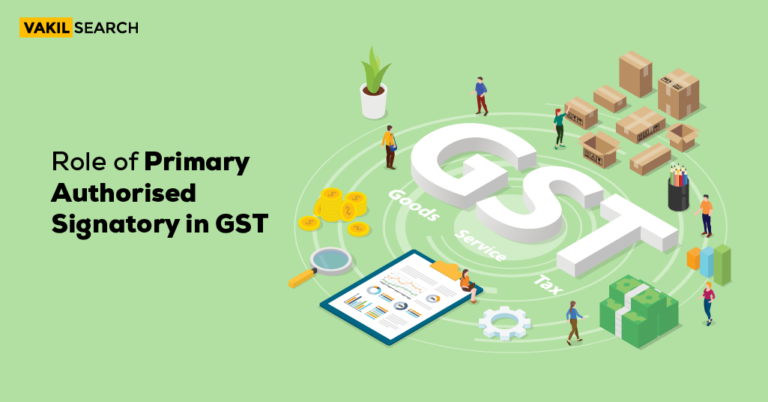For businesses registered under GST, ensuring they claim all available pre-GST tax credits on purchases, inputs, raw materials, and job worker materials by June 30, 2017, is critical to avoid financial losses.
How to Claim ITC on Old Stock? Which form to choose?
TRAN 1 & 2 Forms: Claiming ITC on old stock under GST involves migrating the input tax credit (ITC) you accumulated under the previous tax regime to the GST system. The specific form you need to use depends on your situation and the date of your GST registration.
Here’s a breakdown of the different scenarios and forms:
- Scenario 1: You were registered under GST before July 1, 2017 (Transitional Period)
- Form to use: GST ITC-01
- What you can claim: ITC on inputs, capital goods, and finished goods lying in stock as on June 30, 2017.
- Timeline for filing: Within 30 days of your GST registration date.
- Additional requirements:
- Invoices for the claimed ITC.
- If the claim amount exceeds ₹2 lakhs, a Chartered Accountant or Cost Accountant certificate is mandatory.
- Scenario 2: You registered under GST after July 1, 2017 (Post-Transitional Period)
- Form to use: GST ITC-04
- What you can claim: ITC on inputs and capital goods purchased before your GST registration date, but not on finished goods.
- Timeline for filing: Up to one year from the date of purchase for inputs and five years for capital goods.
- Additional requirements:
- Invoices for the claimed ITC.
- If the claim amount exceeds ₹10,000, a Chartered Accountant or Cost Accountant certificate is mandatory.
Broad aspects of the transition to GST
The transition to the Goods and Services Tax (GST) in India on July 1, 2017, was a significant economic reform that replaced multiple indirect taxes levied by the central and state governments with a single, unified tax. This major shift had several broad aspects:
The transition was the subsuming of various central and state taxes into a single GST. This included:
- Central Excise Duty
- Value Added Tax (VAT)
- Service Tax
- Central Sales Tax (CST)
- Additional Excise Duty (AED)
- Special Additional Duty (SAD)
The subsuming of these taxes aimed to create a seamless national market by eliminating cascading taxes and reducing tax evasion. It also simplified tax compliance for businesses by replacing multiple tax returns with a single GST return.
Critical aspect of the transition was the introduction of a four-tier GST rate structure:
- 0% – For essential items like food, education, and healthcare
- 5% – For basic necessities like clothing and footwear
- 12% – For most goods and services
- 18% – For luxury items and sin goods
This rate structure aimed to balance the objectives of revenue generation with making essential goods and services more affordable.
The transition to GST also involved significant changes in the way businesses operate. Some of the key changes included:
- Obtaining a GST registration number
- Maintaining proper GST records
- Filing regular GST returns
- Complying with reverse charge mechanism for certain transactions
These changes required businesses to adapt their accounting and IT systems, and many businesses faced challenges during the initial implementation of GST.
Despite the challenges, the transition to GST has had several positive impacts on the Indian economy. These include:
- Increased tax compliance
- Improved efficiency of tax administration
- Reduction in cascading taxes
- Boosted economic growth
Overall, the transition to GST was a complex and challenging process, but it has ultimately led to a more efficient and fairer tax system in India.
Information required in TRAN 1
The TRAN-1 form is a crucial document for businesses transitioning to the Goods and Services Tax (GST) regime in India. It enables eligible taxpayers to claim input tax credit (ITC) on closing stock held as of June 30, 2017, under the previous tax regime.
- Basic Details
- GSTIN (Goods and Services Tax Identification Number)
- Legal Name of the Taxpayer
- Trade Name (if applicable)
- PAN (Permanent Account Number)
- Mobile Number
- Email Address
- Confirmation of Returns Under Existing Law
- Declaration of having filed all returns for the past six months under the previous tax regime.
- Tax Credit Details
- Table 4: Tax credit carried forward in the last return filed under existing laws (CENVAT credit for Central Excise, VAT credit for State VAT, Service Tax credit).
- Table 5: Tax credit availed on inputs held in stock (inputs, semi-finished goods, finished goods).
- Table 6: Details of capital goods for which credit has been availed but not yet carried forward.
- Table 7: Details of inputs held in stock for which credit has not been availed.
- Additional Information (if applicable)
- Details of goods sent on approval basis six months prior to July 1, 2017.
- Details of tax credit transferred to recipients under a centralized registration.
- Verification and declaration of the information furnished.
- Supporting Documents
- Invoices or other documents supporting the ITC claims.
- Certificates from a Chartered Accountant or Cost Accountant for claims exceeding specified thresholds.
It’s essential to accurately fill in all required details in TRAN-1 and provide necessary supporting documents to ensure smooth credit transfer to the GST regime.
Filing TRAN 2
A dealer or trader, who was registered for GST but was unregistered under the old regime and does not possess a VAT or excise invoice for stocks held on June 30, 2017, can utilize Form TRAN – 2 to assert tax credit on the existing stock. Manufacturers or service providers are ineligible to submit Form GST TRAN – 2. The filing of TRAN-2 is the responsibility of the dealer or trader at the conclusion of each month, reporting stock sales details to claim input tax credit. The dealer or trader must satisfy the following conditions:
- The goods were not unconditionally fully exempt from excise/VAT or were not nil-rated goods under Excise/VAT.
- This scheme is applicable for only 6 months from July 1, 2017, implying that the stock must be cleared by the end of December to be eligible for credit.
- Procurement documents for such goods must be available.
- The stock of goods for which credit is being claimed should be stored in a manner that allows easy identification.
Details to be filled in TRAN 2
The TRAN 2 form is used in the GST regime to declare:
- Details of opening stock: This includes the quantity and value of inputs, semi-finished goods, and finished goods held in stock as of July 1, 2017, on which credit was not available under the previous tax regime.
- Details of sales made: This includes the quantity and value of goods sold/supplied from the opening stock during the current tax period, along with the central tax (CGST) or integrated tax (IGST) levied and the input tax credit (ITC) allowed.
- Details of stock sent/received for job work: This includes information about goods sent to or received from a job worker, along with the GSTIN of the job worker and the nature of the work performed.
- Basic Details:
- GSTIN
- Name of Taxable Person
- Tax Period (Month and Year)
- Opening Stock Details (Table 4):
- Description of goods (HSN, unit, quantity, value)
- CGST/IGST rate applicable on sale of goods
- ITC allowed on CGST/IGST paid
- Sales Details from Opening Stock (Table 5):
- Date of sale/supply
- Challan number (if applicable)
- Description of goods (HSN, unit, quantity, value)
- CGST/IGST paid on sale
- ITC allowed on CGST/IGST paid
- Stock Sent/Received for Job Work (Table 6):
- Date of sending/receiving goods
- Challan number (if applicable)
- Type of goods (raw material, semi-finished/finished goods)
- Description of goods (HSN, unit, quantity, value)
- GSTIN of job worker
- Nature of job work
- Additional Information:
- You may need to fill additional details depending on your specific situation, such as details of inputs in stock not supported by documents.
Supporting Documents:
- Maintain invoices or other documents supporting the information provided in TRAN 2.
Details to be filled in TRAN 2
TRAN-2 under the Goods and Services Tax (GST) regime in India:
- Basic Information:
- GSTIN (Goods and Services Tax Identification Number)
- Name of the Taxable Person
- Tax Period (Month and Year for which the form is being filed)
- Details of Inputs Held on Stock on 1st July:
- This section is for inputs held in stock on the transition date (1st July 2017) for which you don’t have documents evidencing payment of tax.
- Information to be provided includes:
- Description of goods
- HSN (Harmonized System of Nomenclature) code
- Unit
- Quantity
- Value
- ITC (Input Tax Credit) claimed
- Stock Held Being Sent or Received for Job Work:
- Details of inputs or semi-finished goods sent for job work or received back after job work on the transition date.
- Information to be provided includes:
- Challan number and date
- Type of goods (raw material, semi-finished, finished)
- Description of goods
- HSN code
- Unit
- Quantity
- Value
- GSTIN of manufacturer or job worker
- Details of Inputs Held on Stock on Appointment Date (Without Invoices):
- This section is for inputs held in stock on the appointment date (for migrated taxpayers) without invoices, for which ITC is carried forward to the Electronic Credit Ledger.
- It includes stock-wise declaration of sales figures of inputs subject to Excise Duty or Additional Customs Duty, where ITC is allowed under GST.
- Information to be provided includes:
- Description of goods
- HSN code
- Unit
- Opening balance (quantity on the first day of the tax period)
- Quantity and value of outward supply made during the period
- Central Tax (CGST) or Integrated Tax (IGST) levied
- ITC allowed
- Closing balance (quantity on the last day of the tax period)
- Prerequisite for Table 4: You must have declared details of inputs held in stock (without invoices) in Part 7B of Table 7(a) of TRAN-1 to fill Table 4 of TRAN-2.
- Filing Period: TRAN-2 can be filed monthly for a maximum of 30 months from the appointed date.
- Prior Filing: TRAN-1 must be filed before TRAN-2.
- Due Date: TRAN-2 is due by the 13th of the following month.
- Linking with GSTR-3B: ITC claimed in TRAN-2 is reflected in GSTR-3B.
- Online Filing: TRAN-2 is filed online through the GST Portal.
Unavailed ITC W.R.T. Capital Goods
The claim of Input Tax Credit (ITC) depends on the specific circumstance:
- Unavailed ITC on Capital Goods:
- Certain capital goods have a phased credit claim mechanism, where ITC can be claimed over a pre-determined period (usually 5 years). This means you claim a portion of the ITC in each year.
- If you haven’t claimed your full ITC entitlement on capital goods yet, you can continue doing so in accordance with the applicable schedule.
- Remember, unutilized ITC on capital goods cannot be claimed beyond the specified period.
- Stock Held for Job Work:
- You can claim ITC on inputs sent for job work only if:
- You receive back the finished goods or semi-finished goods within the prescribed period (usually 1 year).
- The job worker pays the applicable GST and files proper returns.
- You have all necessary documents like challan, invoice, and GSTIN of the job worker.
- Goods Sent to Agent/Consignment Dealer:
- If you send goods to an agent or consignment dealer for sale, ITC on such goods can be claimed under two conditions:
- Actual Sale: If the agent/dealer sells the goods and pays you the sale proceeds along with applicable GST, you can claim ITC on the purchase of those goods.
- Unsold Goods Received Back: If the goods remain unsold and are returned to you, you can claim ITC on their purchase upon receipt, provided you have proper documentation.
Conditions for Claiming ITC:
- The goods/services must be used for business purposes, not for personal consumption or exempt supplies.
- You must have a valid tax invoice or debit note with all prescribed details.
- You must have actually received the goods/services.
- You must have paid the tax to the government and filed the required GST returns.
- The supplier must have filed their GST returns reflecting the tax paid.
Percentage of ITC Claim Available
Percentage of ITC Claims Available under GST (with Visuals)
Claiming Input Tax Credit (ITC) under the Goods and Services Tax (GST) regime allows businesses to offset the GST paid on purchases against the GST liability on their sales. However, the percentage of ITC you can claim depends on the type of goods or services involved and other specific conditions.
General Conditions for ITC Claim:
Before diving into percentages, remember these essential prerequisites for claiming ITC:
- The goods or services must be used for business purposes, not personal consumption or exempt supplies.
- You must have a valid tax invoice or debit note with all prescribed details, like GSTIN, invoice number, date, description, value, and tax amount.
- You must have actually received the goods or services.
- You must have paid the applicable GST to the government and filed the required GST returns (GSTR-3B).
- The supplier must have also filed their GST returns, reflecting the tax paid on the invoice.
Percentage of ITC Claim:
Now, let’s explore the percentage of ITC claim available in different scenarios:
- Capital Goods:
- ITC on capital goods can be claimed in monthly installments over the asset’s useful life, as prescribed by GST rules.
- The percentage of ITC claim varies based on the nature of the capital goods:
- General capital goods: 50% in the first year, 25% in the second year, and the remaining 25% in the third year.
- Specific capital goods (e.g., ships, aircraft, power generation machinery): 100% in one go.
- Input Supplies (Other Than Capital Goods):
- ITC on input supplies (other than capital goods) can be claimed in full in the same month as the receipt of goods/services, provided all conditions are met.
- Reversal of ITC:
- ITC may need to be reversed in certain situations, like:
- Non-payment of invoices within 180 days.
- Goods lost, stolen, destroyed, written off, or disposed of without tax payment.
- Goods used for exempt supplies.
- Other Scenarios:
- Job Work: ITC on inputs sent for job work can be claimed upon receipt of finished goods or semi-finished goods, subject to specific conditions.
- Agent/Consignment Dealer: ITC on goods sent to agents/consignment dealers can be claimed upon actual sale or receipt of unsold goods back.
FAQs
What is the last date for TRAN-1 and TRAN-2?
● TRAN-1: The original deadline for filing TRAN-1 was October 31, 2017. However, following Supreme Court rulings and subsequent amendments, the facility to file or revise TRAN-1 was reopened for a limited period from October 1, 2022, to November 30, 2022. Therefore, it's no longer possible to file or revise TRAN-1 as of January 13, 2024.
● TRAN-2: You can file TRAN-2 monthly for a maximum of 30 months from the appointed date for your migration to GST. This means the last date for filing TRAN-2 depends on your individual migration date.
What is the last date for taking input tax credit in GST?
Input Tax Credit (ITC) can be claimed for eligible purchases within the tax period in which the goods/services are received. However, there are some specific deadlines for claiming ITC on certain items:
● Capital Goods: ITC on capital goods can be claimed in installments over the asset's useful life, as prescribed by GST rules.
● Job Work: ITC on inputs sent for job work can be claimed upon receipt of finished goods or semi-finished goods within the prescribed period (usually 1 year).
● Unavailed ITC: ITC on purchases made before the introduction of GST can be claimed under TRAN-1 until November 30, 2022, as mentioned earlier.
What is TRAN-1 and TRAN-2 credit?
● TRAN-1: This form allows businesses to carry forward their eligible input tax credit (ITC) from the pre-GST regime to the new GST system. It's no longer possible to file or revise TRAN-1 as of January 13, 2024.
● TRAN-2: This form is used to claim ITC on specific types of inputs held in stock at the time of GST implementation, such as:
● Inputs without invoices
● Goods in transit
● Inputs sent for job work
What is the time limit for TRAN-1 credit?
As mentioned earlier, the deadline for filing or revising TRAN-1 was November 30, 2022. Therefore, it's no longer possible to claim ITC through TRAN-1 as of January 13, 2024.
Who is eligible for TRAN-2 in GST?
All businesses that were registered under the pre-GST regime and migrated to GST are eligible to file TRAN-2, provided they meet the specific conditions for claiming ITC on the listed items (inputs without invoices, goods in transit, etc.).
Who is eligible for TRAN-1 credit?
Previously, businesses registered under the pre-GST regime and migrating to GST were eligible to claim ITC through TRAN-1. However, the deadline for filing or revising TRAN-1 has passed, and this option is no longer available.











